Date: 24-06-2024
The Great Debate in Mobile App Design: Skeuomorphic vs. Flat
1. An Overview of Skeumorphic and Flat Design
There are two different ways to approach UI design in mobile apps: skeuomorphic design and flat design. Vibrant colors and basic features are used in flat design to promote utility and simplicity. Skeuomorphic design, on the other hand, imitates real-world textures and objects in an effort to give consumers a more intuitive interface.
2. The Development of Trends in Design
User preferences and technological advancements have shaped the shifts in design trends in mobile app development. Early on in the development of apps, skeuomorphic design was popular because it gave consumers a sense of familiarity. But the emergence of flat design signaled a move toward practicality and simplicity.
3. Essential Features of Flat Design
Bright colors, open areas, and clear lines are the hallmarks of flat design. It puts more of an emphasis on usability and functionality than gradients, shadows, and textures. Modern, minimalist aesthetics are frequently linked to this design concept.
4. Essential Features of Skeuomorphic Design
The goal of skeuomorphic design is to imitate real-world textures and objects while offering a recognizable user interface. In order to convey a feeling of depth and realism, this design approach frequently uses gradients, shadows, and intricate textures.
5. User Experience and Usability
A mobile app's usability and user experience are crucial to its success. A simple, intuitive interface is provided by flat design, which can improve usability. Skeuomorphic design, on the other hand, offers a more immersive experience, which is advantageous for some kinds of applications.
6. Performance Factors
A key consideration in the creation of mobile apps is performance. Because flat design is simplistic, it usually leads to faster load times and better performance. Skeuomorphic design, on the other hand, may require additional resources, which could have an impact on the application's performance.
7. Visual Appeal and Identity
An app's visual appeal has a big influence on how engaged users are. A sleek, modern aesthetic that goes well with modern branding is provided by flat design. Even if it is more realistic and detailed, skeuomorphic design can offer a distinctive and memorable user experience.
8. Inclusivity and Accessibility
Designing a mobile app requires careful consideration of accessibility. Because of its simplicity, flat design may be easier for those with vision problems to use. But for some people, the realism of skeuomorphic design can also help with understanding.
9. Actual Case Studies of Flat Design
The ideas of flat design have been embraced by several popular apps. The Metro design language from Microsoft and the Material Design from Google are two examples. These illustrations explain how flat design may improve user experience in practical ways.
10. Skeuomorphic Design Examples in the Real World
Many apps still employ skeuomorphic design to give users a fun and engaging experience. Apple's initial iOS interfaces, which offered customers a recognizable and easy-to-use interface, are outstanding examples of skeuomorphic design done right.
11. How User Preferences Function
The decision between skeuomorphic and flat design is heavily influenced by user preferences. While some consumers could value skeuomorphic design's familiarity and detail, others might prefer flat design's simplicity.
12. How Design Affects User Retention
An app's design has a big influence on how long users stay on it. The user-friendly interface of flat design can entice users to revisit the application, but the captivating interface of skeuomorphic design can also lead to increased rates of user retention.
13. Adaptability and Personalization
In the design of mobile apps, customization and adaptability are crucial. The simplicity of flat design makes modification and scalability simple. Despite being more complicated, skeuomorphic design can provide a more tailored user experience.
14. Development Trends for Mobile Apps
The design trends for mobile apps are always changing, and both skeuomorphic and flat designs are important. Remaining competitive can be achieved by firms by following these trends. India's mobile app development services can aid in the successful integration of these developments.
15. Flat Design Tools and Frameworks
Developers can use a variety of frameworks and tools to execute flat design. These consist of different UI kits and Google's Material Design framework. These resources help guarantee uniformity while streamlining the design process.
16. Skeuomorphic Design Tools and Frameworks
Skeuomorphic design implementation can be more difficult, however programs like Adobe XD and Sketch can be useful. With the help of these tools, developers may create realistic and engaging interfaces thanks to their rich design capabilities.
17. The Financial Aspect
Using flat design as opposed to skeuomorphic design can have different costs. Because flat design is so straightforward, it is typically more economical. On the other hand, if skeuomorphic design boosts user engagement and retention, it can yield a larger return on investment.
18. Working Together with Developers
Working with knowledgeable developers is essential to creating successful apps. The successful and efficient implementation of your app's design can be guaranteed by choosing to hire React Native developers India or hiring a React Native developer in India.
19. Prospective Patterns and Forecasts
Flat and skeuomorphic design components will probably continue to be combined in mobile app design in the future. These trends will be shaped by evolving technologies and shifting user tastes, which will present fresh chances for creativity.
20. Final Thoughts: Selecting the Appropriate Design Style
The objectives, target user base, and branding of your app will ultimately determine whether to choose a flat or skeumorphic design. Each design approach has benefits of its own and can be applied to improve user experience. Through the utilization of mobile app development services in India, enterprises can guarantee that the design of their app is in line with their goals and appealing to their users.
In conclusion, the argument between skeuomorphic and flat design is more about which is better suited for the intended use and user base of your app than it is about which design is better overall. Making decisions based on an understanding of the advantages and disadvantages of each design paradigm can help you create an app that not only looks amazing but also offers a remarkable user experience. Prioritizing the requirements and preferences of your consumers is crucial, regardless of whether you decide to go with the realism of skeuomorphic design or the simplicity of flat design.
Your choice of weapon
Build your Apps for any Platform
We to code. It's our passion
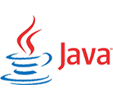

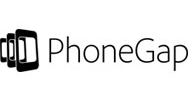
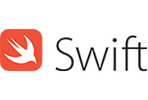
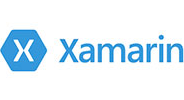
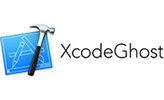
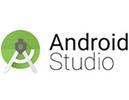
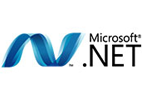
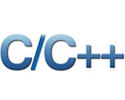

you can also reach us at our given
email address or phone number.




